Succulents are disease-free plants and are difficult to kill for insect pests. However, if you maintain proper growing conditions such as water, potting soil mix, temperature, light, and fertilizer, the succulent plants will survive the attack of the most common bugs.

These bugs are fungus gnats, mealy bugs, spider mites, aphids, whiteflies, and scale insects. Most common succulent pests suck plant fluids and the chlorophyll molecule, turning foliage into chlorotic and distorted leaves.
In this writing, we’ll discuss the pests in succulents and how to get rid of them with chemical and DIY pest control techniques.
Aphids or Plant Lice
Aphids are sap-sucking plant pests and can double their populations within days. Plant lice are considered extremely harmful to all plants because of their higher reproduction rate.
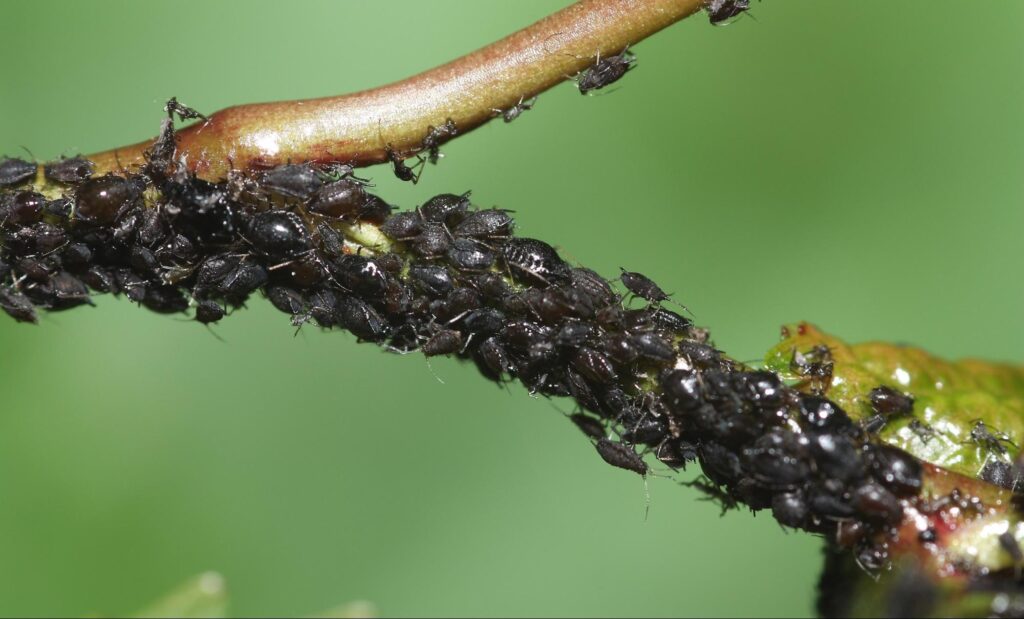
The black sooty mold growth covers the leaf surfaces and interrupts photosynthesis. On the other hand, the ants guard the aphids and also nurture them to secrete honeydew more and more. Therefore, they interfere with the beneficial bugs on succulents.
The visible symptoms of the aphid’s feeding are stunted growth, pale spots on both sides of foliage, weaker leaves with sooty mold, and ants.
How to Treat Aphids or Green Flies on Succulents?
One of the best and easy ways to knock down the aphids on succulents is by washing them off with a garden hose. Then, remove the succulent pots, cover the soil surface with plastic bags, and apply a strong stream of water to knock off the aphids.
The second remedy is to apply dish soap water to your succulents to destroy the soft-bodied aphids.

In the case of succulent outdoor gardens, encourage beneficial insects such as lady beetles, green lacewings, and pirate bugs. For example, the Lady beetle is an aggressive eater of aphids and can eliminate 20 to 50 green flies per day.
RELATED: Pests in Succulents and How to Get Rid of Them by Chemical & Natural Ways?
Fungus Gnats or Flying Insects
Fungus gnats are a severe problem for indoor spaces because their presence is a constant annoyance. The most indoor environment and organic matter in your potting soil mix attract these flies.
Adult fungus gnats breed in these places, such as egg-laying in the potting mix of succulents. Their eggs hatch into transparent larvae with a yellow hint and blackheads.
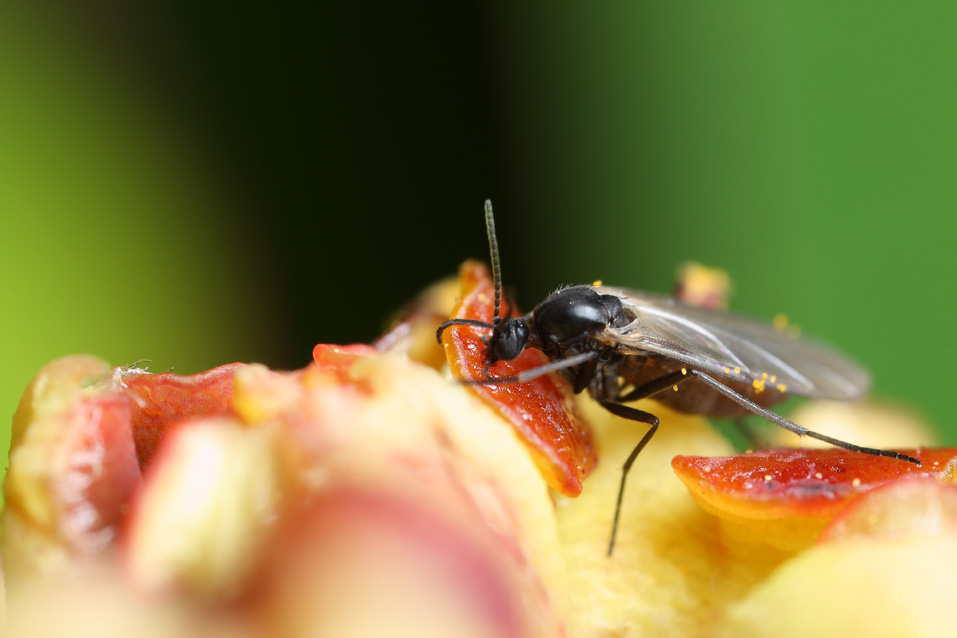
The fungus gnat larvae are the ones that wreak havoc on young seedlings and their tender roots.
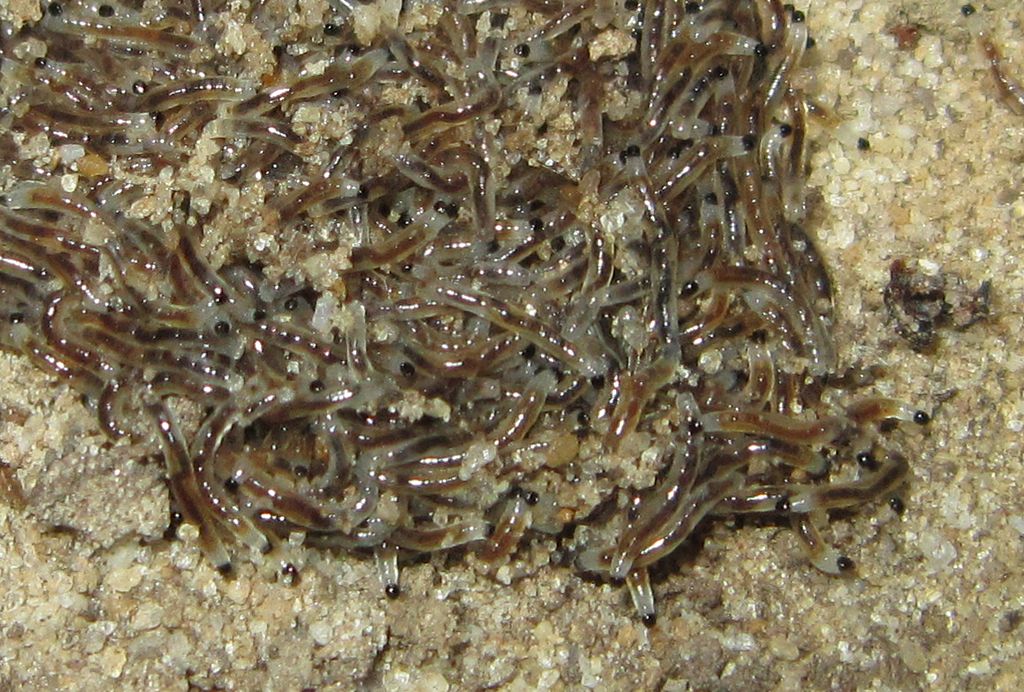
Their constant feeding damage and expose the plant roots to rotting pathogens and other plants.
Fungus gnat larvae feeding damage include dull and ill-looking plants with complete defoliation. These larvae also lead to leaf discoloration and curling when they are in large groups.
How to Get Rid of Fungus Gnats on Succulent?
To control fungus gnats on succulents;
- Reduce watering of your succulents to keep them dry and repel gnat flies because the fungus gnat tends to breed once they find the moisture.
- Use an apple cider vinegar trap to capture the adult flies and interfere with their life cycle. Take two tablespoons of apple cider vinegar with a few drops of dish soap in a plastic cup. Cover the plastic cup with a perforated bag. The vinegar odor attracts the gnats to fly in and will not be able to leave the cup.
- Sprinkle cinnamon powder on the tops of the soil surface to prevent the fungus gnat egg-laying process. It will also kill the fungus contamination in potting mix and causes the starvation of fungus gnat larvae. This natural spice is excellent for repelling gnats and improving succulent growth.
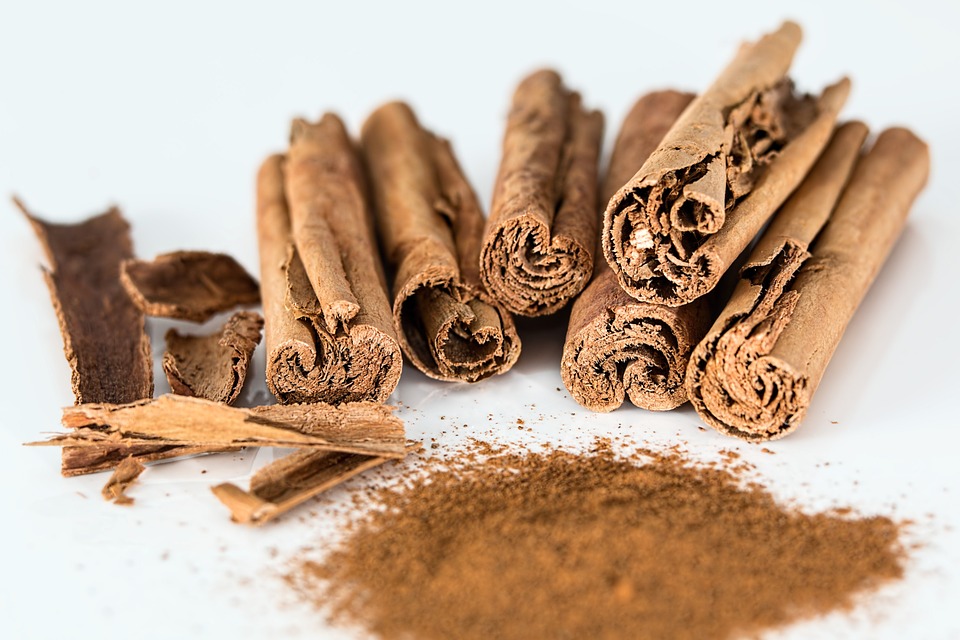
RELATED: Do Succulents Attract Spiders? Yes, They Do! Let’s Learn How to Keep Them Away?
Spider Mites
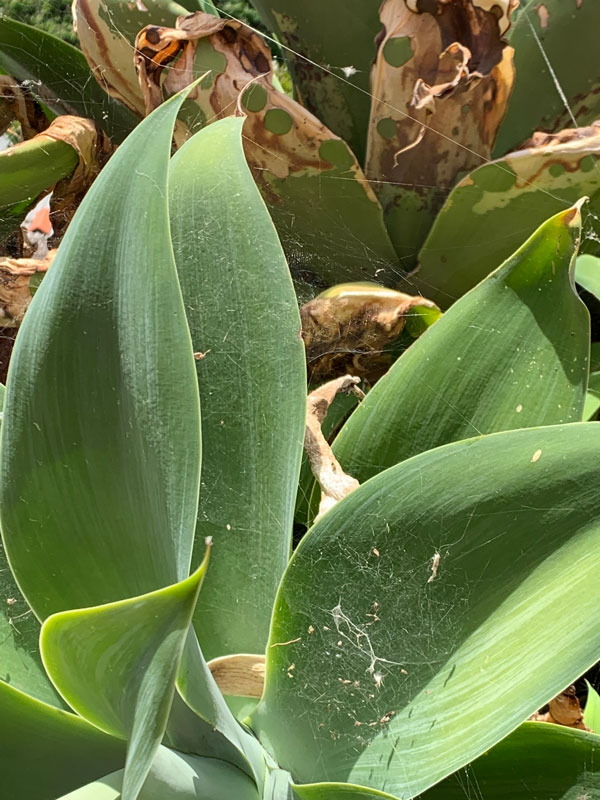
Spider mites are the tiniest creatures with plant sap-sucking (sweet sap) properties. On succulents, the most common insects are red spider mites. An infested plant with red spider mites turns pale and weak. Under heavy infestations, the entire succulent plant changes into silver or white with no defense against spider mites.
The early sign of their damage is fine webbing on the underside of leaves. As the sap-sucking on plant juices continues, the growth reductions and foliage discoloration become prominent.
How to Get Rid of Spider Mites on Succulents?
To treat spider mites on succulents, the following tips are practical;
- Apply neem oil as a foliar spray with mild dilutions on the succulents and cactus, or you can use its solution as a soil drench to kill microbial contaminations.
- Use insecticidal soap spray to eliminate mite populations because, within days, they’ll be double with more future damage.
- Soak the cotton swab entirely into a 70% isopropyl alcohol (rubbing alcohol) and directly rub on infected plant parts to kill the mites
- Spray the plants with soap water to kill mites
- Uniformly sprinkle the diatomaceous earth on the soil surface and on the leaves to puncture and pierce the bodies of mites and cause death due to dehydration.
- Attract the beneficial insects in your outdoor succulent plant gardens to keep the mite populations under control
Mealybugs
Mealy bugs are white, cottony, and oval-shaped insect pests of leafy succulents. They cover their leaf surfaces with white, cottony fuzz and reduce their cosmetic value. While sucking out plant sap, mealy bugs secrete honeydew which attracts ants and assists in their growth.
On the other hand, the honeydew also supports the growth of black sooty mold fungus, which covers the foliage and gives the appearance of a dirt plant.
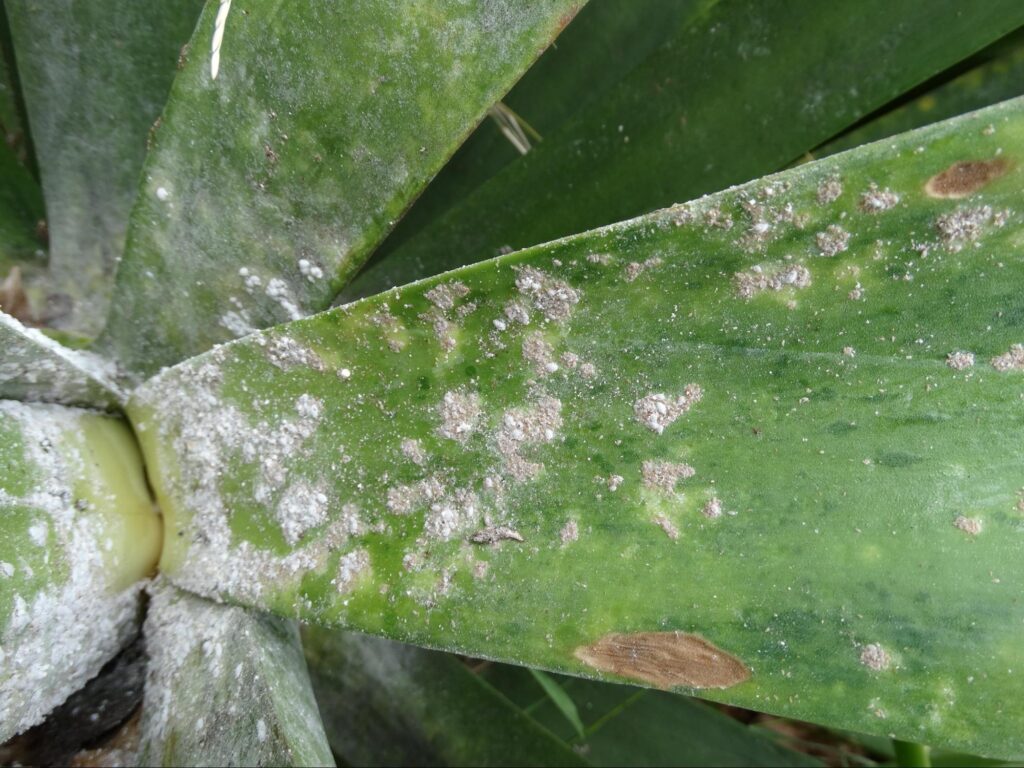
Female mealybugs lay their eggs on the underside of an infected plant that hatches within a few days. Then, the newly hatched crawlers move a short distance, searching for suitable feeding sites.
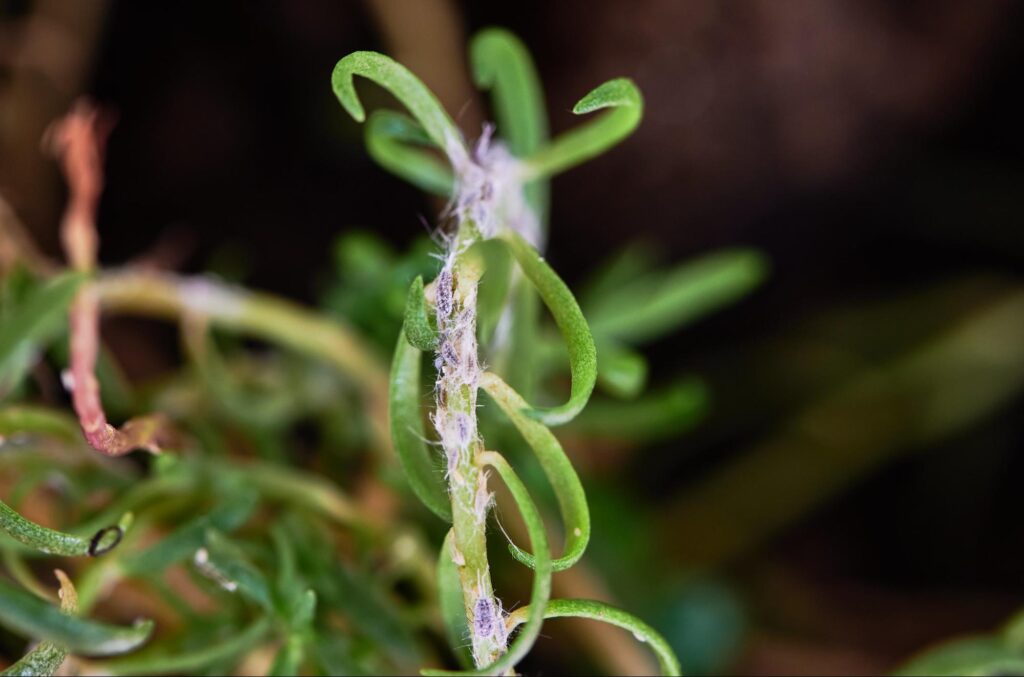
Once they establish themselves on suitable feeding sites, they start sucking plant fluids and undergo three molts. Their constant sucking causes the plant to dry and wilt like other pests.
How to Eliminate Mealybugs on Succulents?
- Rub infested succulent plant surfaces with rubbing alcohol to dissolve mealybugs’ segmented and complex body covering. Or you can spray the rubbing alcohol dilution with water on succulents to eliminate bugs.
- Spray the plants with insecticidal soap such as a safer soap to smother the mealybugs within hours.
- Sprinkle the granular insect killer at the plant base to kill any fallen mealybugs to prevent the succulent stem.
- Introduce the natural enemies of mealy bugs to get rid of them, such as green lacewings.
Scale Insects
Like mealybugs, scale insects suck out plant sap, leading to defoliation and harming these beautiful little plants. The most damaging ones are armored and soft-scale insects which can kill your plant with continuous feeding.

How to Get Rid of Scales on Succulents?
- Lady beetles are considered to scale destroyers and help keep their populations at lower levels.
- Spray rubbing alcohol on scale-infested plants
- Remove and discard the heavily infested leaves and branches; do not add them to the compost pile.
Preventive and Natural Pest Control Solutions
The natural pest control solutions will keep the most common houseplant pests away from succulents and cacti. Here are the natural solutions to employ;
- Keep your succulents healthy and happy during the growing season by providing them with optimum fertilizers, light, water, and a well-draining soil mix.
- Do not overfeed the succulents with water and fertilizers during the winter because they are dormant and do not have food requirements.
- Keep the soil surface dry. Over watering will keep the soil wet for more extended and attract fungus gnats, mealy bugs, and root rot pathogens.
- Water succulents with the soak and dry technique, which means first soaking the soil until water comes out of the drainage holes and then waiting until the soil is dry for the next watering.
- To prevent future pest infestations, regularly or weekly spray with 100 percent pure neem oil to deter and repel the unwanted bugs on succulents.
- Remove or prune the weak and damaged leaves and ensure to properly discard them to stop the infestations of other healthy plants.
- Do not reuse soil while repotting the succulents because it may have the eggs and larvae of pests and can cause contaminations. Instead, use fresh and sterilized potting soil mix.
- Spray the succulents with systemic insecticides to poison the bugs that feed on the plants. There are also contact insecticides that kill the pest infestation upon contact.
RELATED: Do Succulents Attract Bugs? Plus Best Home Remedies on How to Prevent Them?
FAQs
How Do I Get Mites off my Succulent?
The best way to remove mites from your succulents is by rubbing alcohol and soapy water spray. Rubbing alcohol deters the mites upon contact and stops their further growth. While the dish soap spray smoothers the mites and, as a result, inhibits their reproduction.
To deter mites, dip the Q-tip in 70 percent isopropyl alcohol and directly apply on to the mites for their killing. Similarly, take one teaspoon of dish soap per liter of water, add into a spray bottle, and apply on mite infected plant.
Is Insecticidal Soap Safe for Succulents?
Insecticidal soap spray is an effective solution against soft bodies and succulent pests. Many gardeners and succulent plant growers find it efficient and rapid action against whiteflies, mealybugs, aphids or plant lice, scale insects, spider mites, and fungus gnats.
Be sure to use half of the recommendations and apply only in the morning or evening when beneficial insects are not around your succulents.
How Do You Make Insecticidal Soap for Succulents?
There are many ways by which you can make an insecticidal soap spray, but the following one is the best and most effective against soft-bodied insect pest infestation;
- Take four cups of warm water and two teaspoons of liquid dish soap (which does not contain the bleach)
- Add one tablespoon of vegetable oil such as canola, olive, peanut, and soybean into the container and mix the ingredients well.
- Pour into a spray bottle and sprinkle gently on the entire plant to kill any pest infestation.
Note: Always use a fresh insecticidal soap spray.
Is Cinnamon Good for Succulents?
Cinnamon is an excellent insect repellent, so it is wise to say that cinnamon is more than reasonable for succulents. To repel the spider mites, whiteflies, and other common pests;
- Mix two tablespoons of cinnamon per pint of alcohol
- Shake them vigorously and let them sit overnight
- Strain the mixture and spray it onto the succulents as a healthy remedy
How Do You Get Rid of Black Aphids on Succulents?
Hosing off with high water pressure is enough to knock down the black aphids from your succulent plants. You can also get rid of black aphids with the applications of neem oil, vegetable oil, and insecticidal soaps. These organic and plant-based sprays effectively kill them and provide long-term protection.
What Pest Eats Succulents?
The common pests that eat the succulent plants and other plants are aphids, whiteflies, caterpillars, spider mites, fungus gnats, mealy bugs, scale insects, grasshoppers, slugs, and snails.
Do Coffee Grounds Help Succulents?
Yes, coffee grounds help succulent plants when mixed with their potting mix. Upon break down, they release nitrogen into the soil, which is vital for their healthy growth.
The coffee grounds also improve the soil texture, drainage, and aeration and suppress the growth of weeds and pests.
How Do You Treat a Mealybug Infestation?
To treat a mealybug infestation, anyone should practice these strategies;
Prune off the weak and infested branches and leaves of succulents. It will give them a fresh start for healthy and newer growths, and they will bloom with full potential.
Regularly apply the soap water solution during the growing season to kill mealybugs. Repot the succulents once a year or every two years to provide them with fresh soil.
Always cuts or injuries of plant with fungicides and spread the cinnamon powder around the indoor succulents to repel ants because they guard and nourish them.
Editor’s Recommendations
25 Beautiful And Easy To Grow Purple Succulents For Homes & Offices
25 Beautiful Flowering Succulents To Grow Indoors (With Pictures)
30 Vibrant Types of Red Succulents for Indoor and Outdoor Gardens







